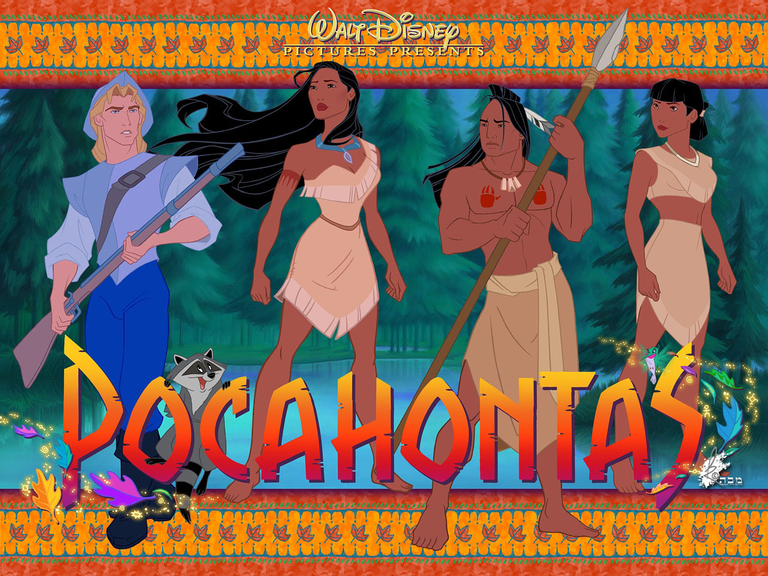Pocahontas Film Poster - Semiotic Analysis
Following on from yesterday's post where I explored film posters and semiotic meaning contained within them, today I want to continue this theme. Yesterday I evaluated the poster to the film Madame Butterfly but in this post I am going to concentrate on Disney's Pocahontas film, released in 1995.

When we study the Pocahontas poster it is immediately clear that the majority of the characters we see are non-white. There is only one caucasian and he is situated on the far left of the image. This strongly suggests that the nature of the film is either set in a foreign location or focuses on an ethnic community. The Pocahontas poster is rich in culture and cultural meaning and so a number of semiotic interpretations can be elicited, but as cultural theorist Stuart Hall highlights:
It is us – in society, with human cultures – who make things mean, who signify.
The visual language within the poster is very strong. The characters clothing also denote a tribal theme and this tribal element is augmented by the spear the male central character is holding contrasted with the white character who is clutching a rifle, these weapons almost become icons representing different cultural backgrounds.
The female characters seem less aggressive and are not equipped with any weaponry, thus conforming to a more traditional gentile female role. In this poster the dominant race is not the white man it is perhaps the black man, or moreover the black woman. This image challenges both traditional roles of females and non-whites, the poster narrative is clearly empowering the female and the non-white individual.
Effort has been made to ensure Pocahontas is accentuated, and as well as being located centrally in the picture she has also been elevated to make it look as though she is the tallest when in actual fact she isn’t.
This particular poster is saturated in semiotic value. Many of the signifiers in the poster all experiment on some level with gender and race. The various coded messages and connotations which the poster conveys are open to a number of varying, perhaps conflicting, interpretations. The poster is imbued with a cultural significance also and challenge many of the readers pre-conceptions regarding race and gender.
Film posters are not always simply adverts for films. Yes, that is there principal goal, they serve as very useful marketing tools. But look a little deeper next time you see one and you will usually discover a whole host of hidden messaging and themes which are not always so blatant on first inspection.
Peace!